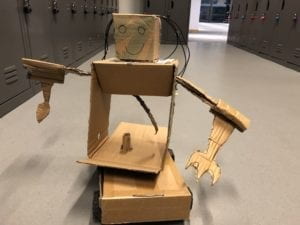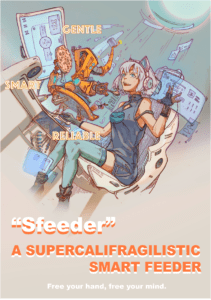From my point of view, interaction is an activity where two actors are involved and both of them have effects on each other by a cycle of listening, processing and responding. During the process of interaction, the action of at least one actor should be made intentionally or purposefully, and the outcome should be entertaining or utilitarian. My definition is inspired by The Art of Interactive Design written by Crawford. The reason why I define interaction in this way is that if without intention or real meaning, the process would become passive and unconscious, which is more like hidden automatic programs than interaction. By contrast, active input usually requires the attention of people participating in interaction and gets them fully engaged in it. This idea is based on the Art Machine which will be explained later.
One project that does not align with my definition of interaction is the Light Barrier by Elliot Woods and Mimi Son(https://www.creativeapplications.net/vvvv/light-barrier-millions-of-calibrated-light-beams-create-floating-phantoms-in-the-air/). In this work of art made up of thousands of calibrated beams, despite the calibration routines and the mathematical model, there are no cycles of action that exert continual influence. Although the artists did programming and calibrating, the audience only need to watch without doing anything. Therefore, although people receive some kind of visual outcome from the project, the outcome is not the result of the real-time input given by the audience.
One project that fits my definition more is the Art Vending Machine created by Matthias Dörfelt (https://www.creativeapplications.net/c/face-trade-art-vending-machine-that-trades-mugshots-for-free-portraits/), which would take a picture of the person standing in front of it, upload it to the blockchain system and generate an artistic picture of the face. In this project, in order to get a picture, people have to do a series of things as input: hit the button, face the camera and make some facial expression. Then the machine would process and print the picture as the output. People may also change their behavior or make faces to get pictures of different shapes and colors, which shows that they are also influenced by the machine.
The inspiration of our design comes from a series of paintings by Jean-Marc Côté and other artists in the 1900s imagining what life would be like in 2000. Although they seem out of date, many of the imaginary machines are highly interactive. In the end we designed “Sfeeder”, a smart feeding machine that can not only feed people food by voice control but also offer health advice.


On the one hand, the machine receives voice messages from users as the input, process it to understand the meaning and deliver the food as the output. On the other hand, users may change their diet and lifestyle when receiving suggestions from the machine. Therefore, the smart feeder should be seen as an interactive work that fits our definition of interaction.